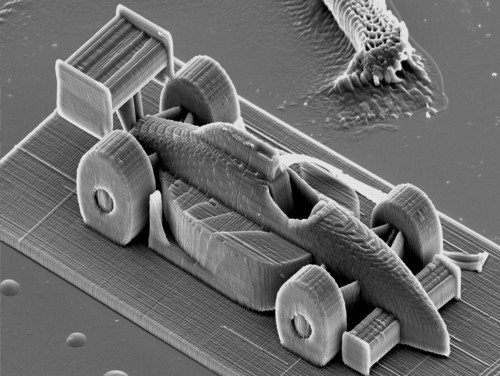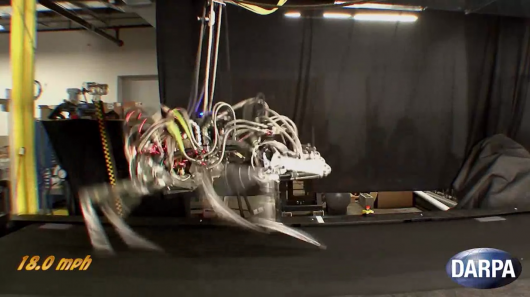3D-nanoprinting world speed record set by Vienna University of Technology
A new world speed record for creation of a 3D-printed nano-object has been claimed by researchers at Vienna University of Technology in Austria.
The Austrian team is able to create sculptures as small as a grain of sand in a fraction of the time than had previously been required.
To demonstrate the process the group created a model of a Formula 1 racing car 0.285 mm (0.011in) in length in just over four minutes.
The scientists said the technique could be used to make small biomedical parts.
To produce the car about 100 layers, each consisting of 200 single printed lines, were created by Vienna University of Technology’s equipment.
“The technology itself is quite well known in the science arena, but the problem was that it was always extremely slow,” said Prof. Jurgen Stampfl.
“It was good as a showcase, but for real world applications it was much too time-consuming. Making complex large 3D structures would take hours or even days.
“Using our set-up and materials, we can speed that up by a factor of 500 or in some cases 1,000 times.”
The formal name for the process is “two-photon lithography”.
It involves focusing a laser beam onto liquid resin to harden it, leaving behind a line of solid polymer just a few nanometres wide.

A new world speed record for creation of a 3D-printed nano-object has been claimed by researchers at Vienna University of Technology in Austria
Unlike traditional 3D-printing techniques which build up an object by adding layers to its surface, the laser can create solid material anywhere within the liquid material.
The process gets its name because the resin only sets if the molecules within it absorb two photons of the laser beam at once – which only happens at the very centre of the beam.
The team’s breakthrough involved improving the control mechanism for mirrors used to focus the laser, and developing the special type of resin involved in the process.
The researchers are now developing bio-compatible resins so that the objects they create can have be used by doctors.
One suggested application is to create scaffolds which cells could use to build new biological tissues.
Engineers at Washington State University have already shown how 3D-printers can be used to build scaffolds to promote the regrowth of damaged bone.
Prof. Jurgen Stampfl said his team’s technique can work in water-based environments meaning it is also capable of creating scaffolds suitable for softer tissues such as cartilage and muscle tissue.
“We can also <<write>> these structures in the presence of cells as we use an infrared laser which is completely harmless for biological tissue,” Prof. Jurgen Stampfl added.
“This is not possible with other 3D-printing techniques which first rely on making the scaffolds and then seed the cells, or use a thin inkjet nozzle to push through the cells which may damage them.
“The two-photon lithography technique lets us do the writing in the same space as the cells – what we call in-vivo writing.”

